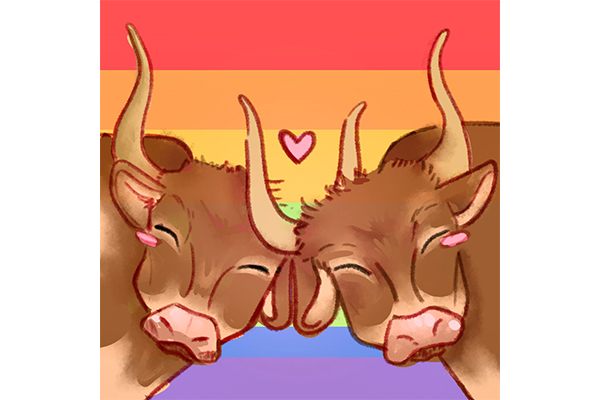Scientists have observed same-sex sexual behaviors in over 1,500 animals species. However, many have assumed this behavior is costly because it does not lead to offspring. According to an article University researchers contributed to, that might not be true.
According to the perspective piece, same-sex behaviors in animals have not been impacted by natural selection because these behaviors are less costly than originally assumed. Researchers from UT-Austin, Yale University, UC Berkeley and Syracuse University proposed the alternative hypothesis about same sex behaviors in animals in the journal Nature Ecology & Evolution on Nov. 18.
When animals first evolved, they lacked the physical features that differentiate animals based on sex, said Max Lambert, co-author and postdoctoral fellow in UC Berkeley’s Department of Environmental Science, Policy and Management.
“It’s very hard to directly target the other sex,” Lambert said. “We have to evolve things like different body shapes, different body colors — chemical cues that let you recognize whether something’s your sex or a different sex.”
Lambert said early animals would display indiscriminate sexual behaviors because they had not evolved the visual and chemical cues necessary to identify members of the different sex.
Lambert said animals only need to engage in different sex behavior at some point in order to produce offspring, and animals tend to display same-sex and different-sex behaviors over the course of their lives.
Erin Giglio, co-author and ecology, evolution and behavior graduate student at UT, said animals have continued to engage in same sex behaviors because it does not harm their reproductive success and may be a normal part of animal sexuality.
Moving forward, Giglio said hypotheses such as this can influence people’s assumptions on how humans and animals work.
“We often project our ideas about people on the animals,” Giglio said. “But when we pause to try and understand what animals are doing on their own level, we can often learn a lot about different ways and different reasons to be.”
Julia Monk, co-author and forestry and environmental studies graduate student at Yale University, said it could be beneficial for young people to be exposed to this new hypothesis in their fundamental biology classes.
In early science classes, Monk said instructors make complex ideas easy to understand but can oversimplify them too much.
“Hopefully, being exposed to our hypothesis will at least make some students feel like more of their life experience fits within the paradigm of biology,” Monk said.





















